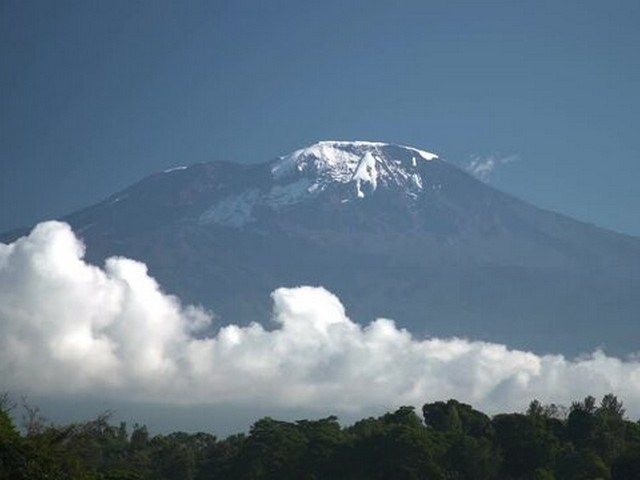How To Pack Snacks And Meals For Kilimanjaro: A Guide to Fuel Your Climb
Embarking on a climb up Mount Kilimanjaro is not just a journey through the physical landscape but also a culinary adventure. The right nutrition can either fuel your ascent to the Uhuru Peak or turn it into a grueling endeavor. This is why knowing how to pack snacks and meals for your Kilimanjaro trek is essential. At Kilimanjaro Centre for Trekking and Ecotourism (KCTE), we understand that preparing for such an epic climb involves meticulous planning, not just of your gear and itinerary but also of your meals and snacks. Join us as we guide you through the best practices for packing nutrition that enhances your hiking experience, keeps your energy levels steady, and makes every step towards the summit a delightful one.
Why Focus on Food for Your Kilimanjaro Trek?
The importance of nutrition during a high-altitude trek cannot be overstated. At elevations reaching over 19,000 feet, your body will experience changes, and your energy expenditure will increase. The food and snacks you bring along need to address high-energy demands, be easy to carry, and most importantly, need to be appetizing enough to encourage regular consumption despite altitude-induced appetite loss.
Understanding the Basics of Trekking Nutrition
Energy Density and Nutritional Balance
When preparing for Kilimanjaro, the key is to focus on energy-dense foods that are also nutrient-rich. Carbohydrates are your muscles’ primary energy source, while proteins are crucial for muscle repair. Fats, though heavier, provide a long-lasting energy source, which is beneficial on longer trekking days.
Ease of Consumption and Digestibility
Choose foods that are easy to eat and digest. High-fiber foods, while generally healthy, can be difficult to digest at high altitudes and might cause discomfort. Small, frequent meals and snacks are preferable and help maintain energy levels.
Flavor and Variety
The decreased appetite common at high altitudes means that flavor and variety become even more crucial. Tasty meals can be a great morale booster after a long day of trekking.
Planning Your Meals and Snacks
Breakfast
Start your day with a hearty breakfast that is rich in carbohydrates and protein. Oatmeal with nuts and dried fruits, or whole-grain cereals with powdered milk, are excellent choices. They are not only high in nutrients but also easy to prepare and digest.
Lunch
Lunch items should be light yet energy-packed. Sandwiches with peanut butter or cheese and salami are good because they provide a balance of carbs, protein, and fats. Wrap them in tortillas instead of bread for easy packing and handling.
Dinner
Your dinner should be the most substantial meal, helping to restore energy and repair muscles. Freeze-dried meals are popular among climbers due to their lightweight and ease of preparation. Choices like a high-protein pasta or a rice and chicken dish can be satisfying and comforting.
Snacks
Snacks are vital as they help maintain energy levels between meals. Energy bars, trail mix, dried fruits, and nuts are all excellent choices. They’re not only lightweight and nutritious but also quick to eat, which is great during short breaks.
Special Dietary Considerations
Vegetarian and Vegan Options
Plenty of high-protein, plant-based options are suitable for climbing Kilimanjaro. Consider packing quinoa, soy-based snacks, or lentil-based trail mixes. These provide essential proteins and fats without the bulk of animal products.
Gluten-Free Choices
For those who are gluten-intolerant, focus on rice cakes, gluten-free oats, and bars. Many freeze-dried meals also come in gluten-free varieties.
Hydration
While not a food, water is perhaps the most crucial component of your diet on the mountain. Hydration affects your physical performance and altitude acclimatization. Aim to drink at least 3-4 liters per day. Consider adding electrolyte tablets to your water to replenish lost salts.
Packing Tips
- Use Resealable Bags: They are perfect for keeping your food organized and safe from moisture.
- Portion Control: Pre-measure your meals and snacks to save time and ensure you consume enough calories.
- Balance Variety and Quantity: While variety is important, remember that every extra item adds weight. Find a balance that works for you.
FAQs About Packing Food for Kilimanjaro
1. How much food should I bring?
Aim for about 2,500 to 4,000 calories per day, depending on your size and the trek’s difficulty.
2. Can I buy food on the mountain?
No, you need to bring all your food with you, though you can arrange for meals through your tour provider.
3. What should I do with leftover food?
Pack it out to keep Kilimanjaro clean. Respect the mountain and practice Leave No Trace principles.
Ready to Conquer Kilimanjaro?
Packing the right snacks and meals for your Kilimanjaro climb can deeply impact your trekking experience. At Kilimanjaro Centre for Trekking and Ecotourism (KCTE), we are dedicated to making your climb as enjoyable and successful as possible, guiding you every step of the way. If you’re ready to take on this challenge, book your adventure with us at KCTE and experience the summit with the best support and guidance available. Remember, it’s not just about reaching the top; it’s about enjoying every part of the journey, meals included!




